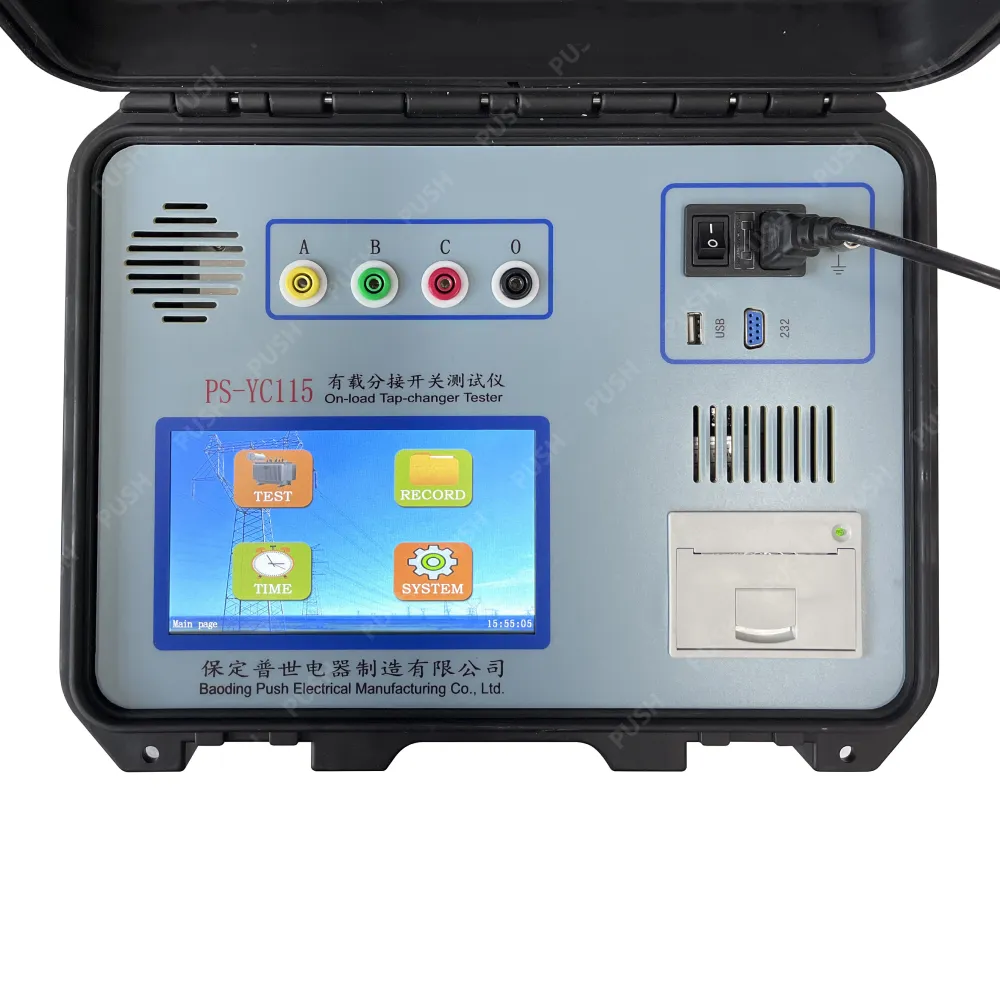 English
English


Effective Strategies for Managing Tap Changer Control in Power Transformers
Tap Changer Control Essential for Voltage Regulation
Tap changers are critical components in power transformers, used primarily to regulate voltage levels and maintain system stability. In electrical networks, fluctuations in load conditions can lead to variations in voltage, which can adversely affect the performance of electrical equipment and the overall reliability of the power supply. To address these issues, tap changer control systems play a vital role by enabling adjustments to the transformer’s turns ratio, thereby allowing for precise voltage regulation.
What is a Tap Changer?
A tap changer is a mechanical device found in transformers that enables operators to change the connection points on the winding of the transformer. This adjustment alters the voltage ratio between the primary and secondary windings. There are two main types of tap changers on-load tap changers (OLTC) and off-circuit tap changers (OCTC). OLTCs allow for adjustments to be made while the transformer is still in operation, providing continuous voltage control without interrupting the electrical supply. In contrast, OCTCs require the transformer to be de-energized for adjustments, making them less versatile for dynamic load conditions.
Importance of Tap Changer Control
The control of tap changers is crucial for several reasons. Firstly, maintaining voltage levels within prescribed limits ensures the safe and efficient operation of electrical devices. Overvoltage can lead to insulation failure and equipment damage, while undervoltage may cause motors to stall or operate inefficiently. Therefore, effective tap changer control helps optimize the performance and lifespan of electrical equipment throughout the grid.
tap changer control

Moreover, as renewable energy sources, such as wind and solar, become increasingly integrated into power systems, the variability of these energy sources necessitates advanced voltage regulation techniques. Tap changer control systems can dynamically respond to changes in generation and load conditions, helping to stabilize the grid amid these fluctuations.
Control Systems for Tap Changers
Modern tap changer control systems have evolved significantly with advancements in technology. Traditional control systems relied on electromechanical relays and simple analog electronics, making them less flexible and more prone to mechanical wear. However, recent developments have introduced digital control systems that leverage microprocessor technology. These controllers can monitor voltage levels in real-time and make rapid adjustments to the tap changers, offering improved accuracy and response times.
Digital tap changer control systems often incorporate communication capabilities, allowing them to interface with supervisory control and data acquisition (SCADA) systems. This integration facilitates centralized monitoring and control of multiple transformers across a power network, enhancing operational efficiency and providing operators with comprehensive visibility into voltage regulation efforts.
Conclusion
In summary, tap changer control is an indispensable aspect of modern electrical networks that ensures efficient voltage regulation and enhances the reliability of power systems. As electricity demand continues to evolve and new challenges arise from the integration of renewable energy sources, the importance of effective tap changer control will only grow. Ongoing innovations in control technology will play a crucial role in maintaining voltage stability, protecting equipment, and ultimately supporting the transition to a more resilient and flexible energy future. Embracing these advancements in tap changer control will be vital for utility operators as they strive to meet the demands of a rapidly changing energy landscape.
-
Differences between open cup flash point tester and closed cup flash point testerNewsOct.31,2024
-
The Reliable Load Tap ChangerNewsOct.23,2024
-
The Essential Guide to Hipot TestersNewsOct.23,2024
-
The Digital Insulation TesterNewsOct.23,2024
-
The Best Earth Loop Impedance Tester for SaleNewsOct.23,2024
-
Tan Delta Tester--The Essential Tool for Electrical Insulation TestingNewsOct.23,2024





